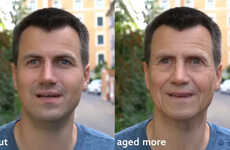
This Software Predicts What a Baby Will Look Like as an Adult
Rahul Kalvapalle — April 15, 2014 — Tech
References: washington.edu & gizmag
Researchers at the University of Washington have developed a predictive age progression app that can accurately predict what a child will look like as an adult, up to the age of 80. Aside from offering up some predictive fun, the software could play a crucial role in solving missing persons cases. The software algorithm, developed by a team led by professor Ira Kemelmacher-Schlizerman, is claimed to be able to do a better job than a human.
The software uses a database of thousands of faces grouped by age and gender. It determines the average pixel distribution of different facial features and calculates how those features change as a person ages.
It starts by taking a baby picture as input. It then corrects for tilts, turned heads and lighting before applying age-related changes to the baby photo to predict how he or she will look will as an adult.
The software uses a database of thousands of faces grouped by age and gender. It determines the average pixel distribution of different facial features and calculates how those features change as a person ages.
It starts by taking a baby picture as input. It then corrects for tilts, turned heads and lighting before applying age-related changes to the baby photo to predict how he or she will look will as an adult.
Trend Themes
1. Predictive Age Progression - Opportunity for businesses to develop predictive age progression software to offer personalized services and experiences.
2. Facial Recognition Technology - Potential for industries to utilize facial recognition technology to enhance security measures and solve missing persons cases.
3. Artificial Intelligence in Forensics - Disruptive innovation opportunity for the forensic industry to incorporate artificial intelligence algorithms for accurate age progression.
Industry Implications
1. Technology - The technology industry can explore the development and application of predictive age progression software.
2. Security - The security industry can implement facial recognition technology to strengthen security protocols and solve missing persons cases.
3. Forensics - The forensic industry can adopt artificial intelligence algorithms to improve age progression accuracy in solving missing persons cases.
3.2
Score
Popularity
Activity
Freshness























